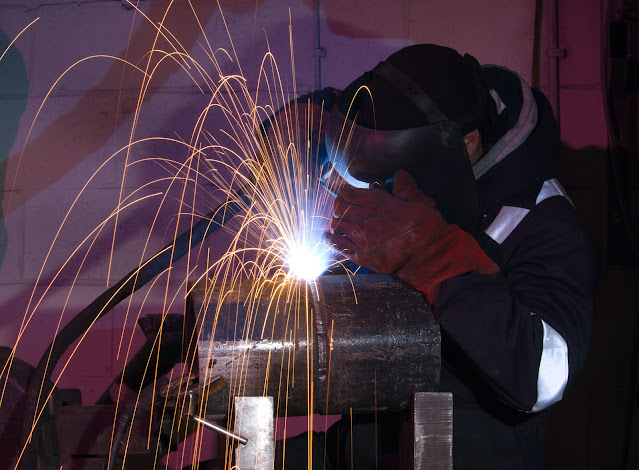There are many varying types of welding techniques - yet they each have their limits. Some will work well for certain metals and others not so much. MIG welding is one technique that can be used frequently and it covers a nice range of thickness of metals. Since it can work better for some metals than others, let’s take a look at what MIG welding is and how to use it with different thickness metals.
What is MIG Welding?
MIG welding, which stands for metal inert gas, may also be referred to as a couple of different things, including gas metal arc welding (GMAW) and wire welding. It is an arc welding process that uses a solid wire electrode pulled through the welding gun. It makes its way into the weld pool where it is met with a shielding gas. Many inexperienced welders find that MIG welding is a good place to start. It isn’t an intricate way to weld and is frequently used by all sorts of individuals who aren’t professional welders, including artists, at home DIY-ers, maintenance workers or mechanics.How to MIG Weld Different Thickness Metals
There are many factors that need to be considered when MIG welding to ensure that you have everything for a good weld. But perhaps one of the most important is the direct correlation between the metal thickness and the voltage and amps that need to be used. Most MIG welding can suit metal that ranges from 24-gauge to ½-inch thick. To weld the thinner pieces of metal, it is going to require a lower amperage - and the required amperage will go up as the metal thickness increases. For example, MIG welding a piece of metal that is ⅛-inch thick may only require 125 amps whereas a ½-inch piece of metal may require 500 amps. But what this actually means is that the sizing is the maximum thickness you can use with that amperage. So for 500 amps, you can MIG weld a piece of metal any size up to and including a ½-inch piece of metal. Finally, it is important to keep in mind that even though MIG welding can accommodate some pretty thick metals, each welding tool is going to have its own capabilities. Take the time to get to know what you are working with - and what size thickness yours is capable of handling.Tips for MIG Welding Various Size Metals
To properly MIG weld any size metal, make sure you follow the tips below for both thick and thin metals. For thicker metals:- Keep a clean surface. Welding thick metal can be challenging so stripping away all the unnecessary, such as paint, grime, rust, and the like can make it a little more manageable.
- Preheat the metal. When working with thick metals, preheating the surface before you begin can make it easier for you.
- Understand shielding gas. Getting the right mixture of shielding gas matters for the success of your weld. For MIG welding, one of the most common is a 75% argon and 25% CO2. But the greater understanding you have of them - and the more practice - the easier it will be to get the right gas for you.
- Angle your torch right. Believe it or not, the way you angle your torch matters as to whether it not you will end up with burnout. For MIG welding, you want to make sure that there is a short amount of distance between the tip and the metal.
- Use the pulsing technique. Rather than giving constant full heat, pulse your welding tool to avoid going too far and ending up with an unwanted hole.
- Consider thinner filler metals. Those that are thinner require less heat - and pose less risk to the piece.


No comments:
Post a Comment